Legendary race cars were made for speed, but many were beautiful enough to be considered art works even when standing still, form following function in the most aesthetic of ways.
Thus the Phoenix Art Museum’s new exhibit, Legends of Speed, that brings a group of significant racing machines into its main gallery for a unique show that blends motorsport heritage with the purposeful splendor of things built to go fast.
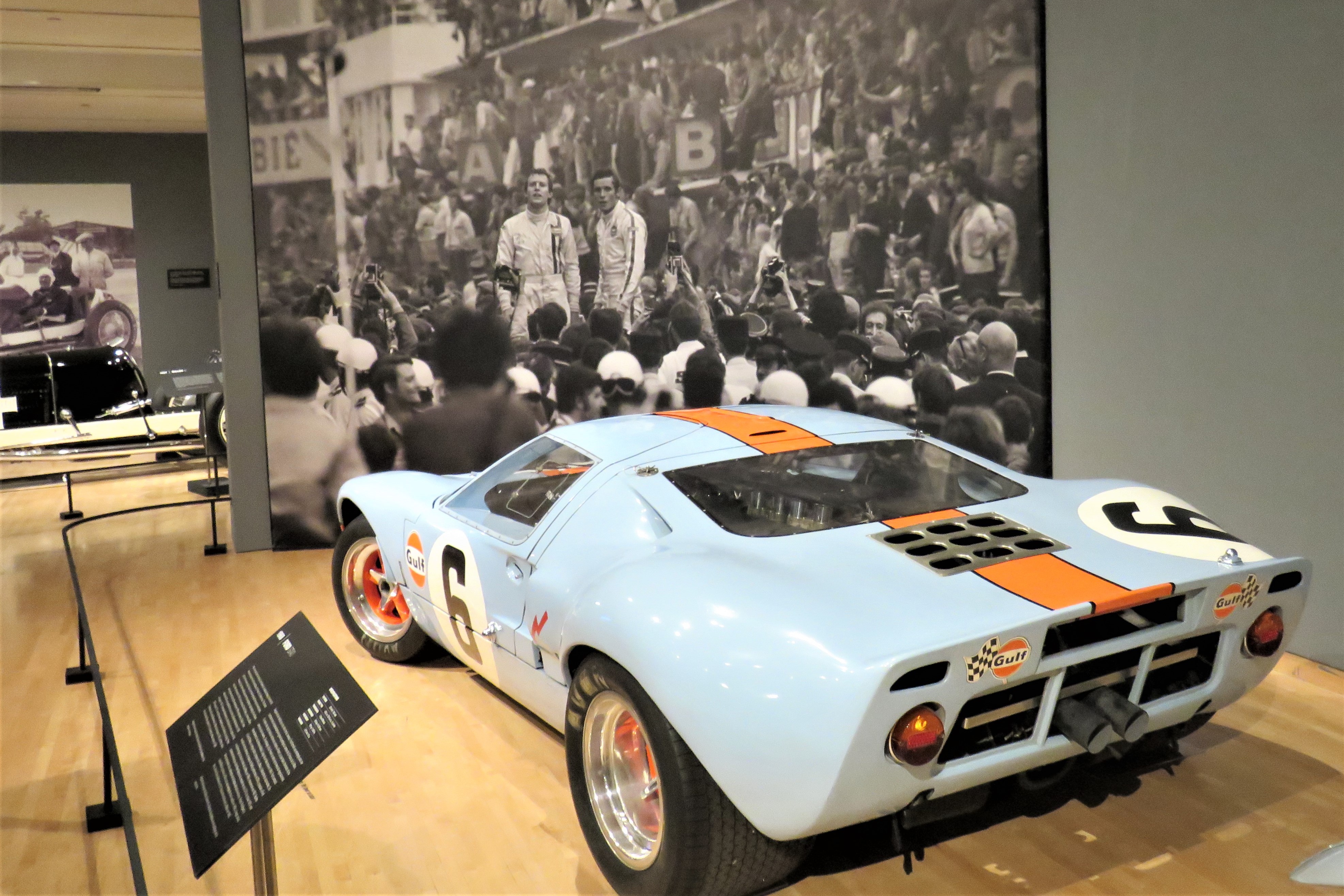
There are 22 race cars in the Legends exhibit, spanning 60 vibrant years of competition from 1911 through 1978, cars created by Ferrari, Bugatti, Mercedes-Benz, Ford, Bentley, Maserati and others, as well as fabulous purpose-built racers.
There are cars that competed in the world’s most famous racing events, such as the 24 Hours of Le Mans, the Indianapolis 500 and grand prix races around the world, and driven by such greats as A.J. Foyt, Mario Andretti, Dan Gurney and Stirling Moss.
Each of these cars has a story to tell, and as an art exhibit, each stands as an expression of creativity, coming together as an art exhibit like no other.

“This is a one off, a show that is basically a collection that no one will ever get to see put together again,” said Carter Emerson, co-chairman of the Arizona art museum’s board of trustees and a leading force behind the exhibit, who pointed out that the cars come from a variety of top-grade private collections as well as major museums.
“It’s absolutely unique. You’d see some of these cars at Pebble Beach (Concours d’Elegance) or Goodwood (Festival), but you’re never going to see all these together again. You’ll never get the owners to agree to four and a half months again, I can assure you.”

The Phoenix Art Museum is not new to the concept of cars as art. In 2007, the museum hosted an acclaimed exhibit called Curves of Steel that explored the artful designs of vintage automobiles. The overwhelming success of that show, which brought in hordes of visitors – many of whom were first-time art-museum visitors – made the idea of Legends of Speed seem like a natural.
While some fine-art aficionados might be skeptical of placing race cars in an art museum, few could doubt the overall artistry of this assemblage, which opened November 2 and will be on display through March 15.
“Legends of Speed will enable our community to explore the artistry and design of these iconic cars, while learning about some of the greatest racers and race car drivers in history,” said Gilbert Vicario, the museum’s deputy director for Curatorial Affairs, and curator of this exhibit. “This exhibit is truly a once-in-a-lifetime opportunity to experience many of the world’s most-famous and successful race cars all in one place.”
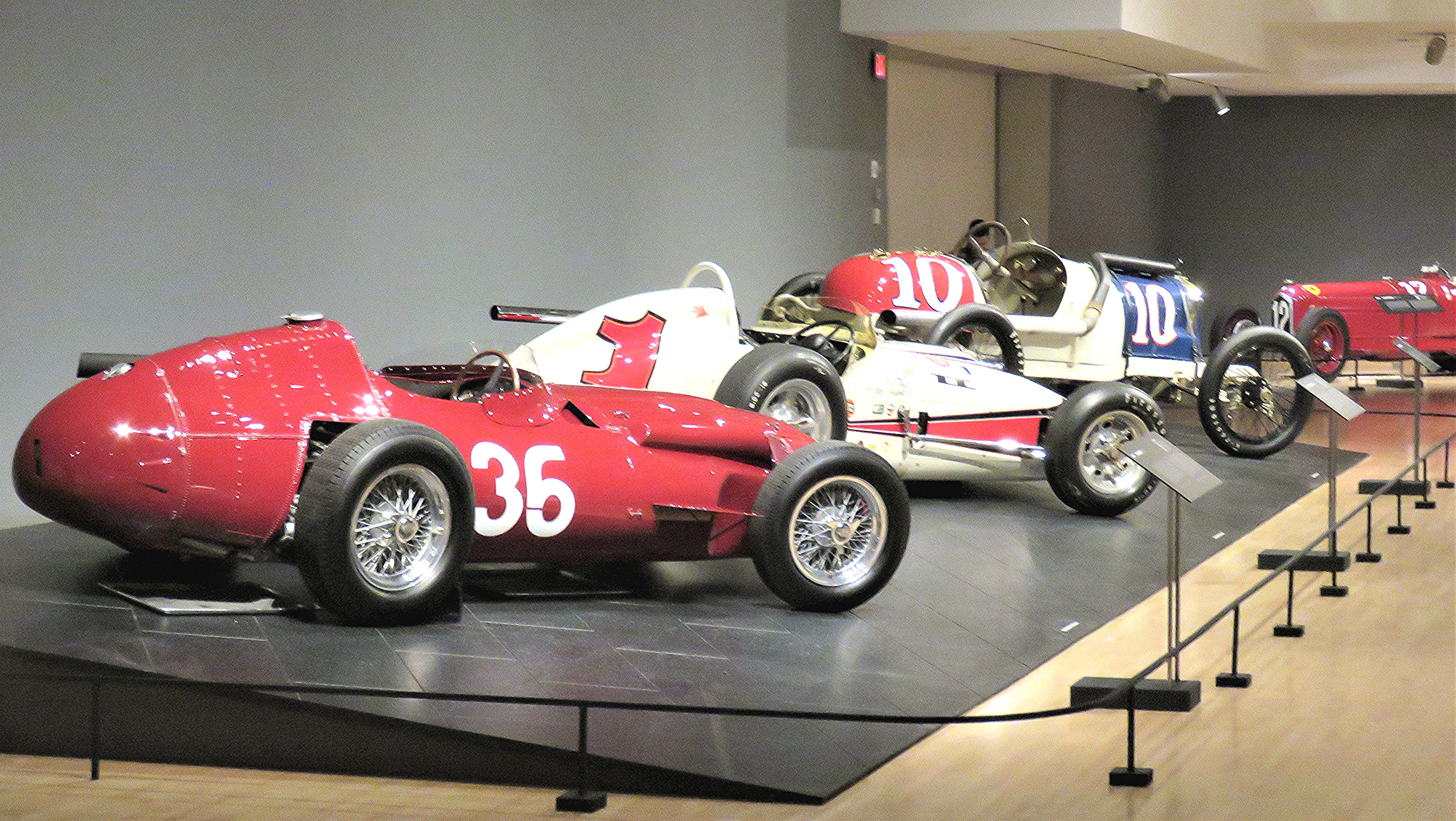
Another person involved with the exhibit is a legend in her own right, veteran race driver Lyn St. James, a Phoenix-area resident who lent her vast store of knowledge and expertise to the show. For St. James, the major lure of the exhibit is exploring the stories of the people who designed, built and drove the cars.
“The cars are fabulous because it’s a physical presentation of a lot of stories that the people are in, whether they designed those cars or whether they raced those cars, and so those stories have a chance to live again,” she said. “It’s going to tell a different story than people expect. Hard-core race fans are going to come and be educated and impressed and surprised and delighted.”
The racing story that most intrigues St. James is that of Hellé Nice, whose 1928 Bugatti Type 38B is in the show, and whom St. James names as a personal hero. A dancer and model in France before becoming a driver in the overwhelmingly male-dominated sport, Nice won much success and popular acclaim as a motorsports star, earning her the titles of “The Bugatti Queen” and “Fastest Woman Alive.”

St. James also identifies the car that most excites her in the Legends exhibit: Legendary racer Dan Gurney’s magnificent projectile, the 1967 Eagle F1 which won the Belgian Grand Prix and is considered one of the most stunning and advanced grand prix cars ever made.
“I turned the corner there, and I saw the Eagle, and it just stops you in your tracks,” she said. “Every design feature of every little piece, you can’t stop looking at that car. That just captures me.”
Inside the exhibition hall stands a veritable encyclopedia of racing’s greatest competitors, such as the 1968 Ford GT40 that twice won the 24 Hours of Le Mans, as well as another Le Mans icon, an immensely valuable 1962 Ferrari 250 GTO.
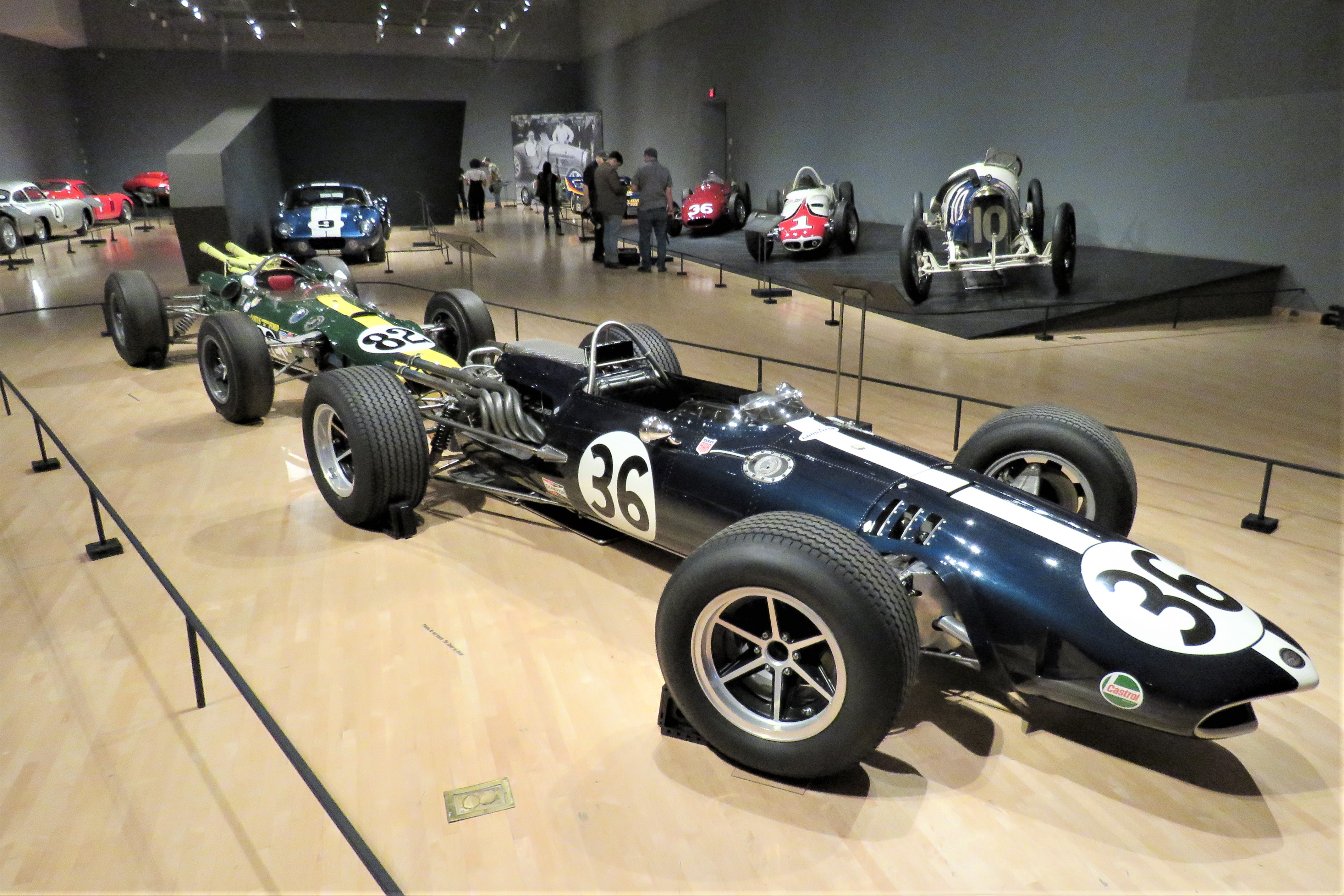
There’s the 1929 Bentley known as Old Number 1 that won Le Mans two years in a row and is arguably the most famous of all Bentley race cars, and a 1960 Maserati Tipo 61 nicknamed “Birdcage” because of its intricate latticework of small-caliber tubes that make up the chassis.
One of Carroll Shelby’s world-champion Cobra Daytona Coupes, a 1964 example, designed by the visionary Peter Brock and named for setting a lap record at Daytona is on display. And a 1973 Porsche 917/30, among the German marque’s most spectacular race cars, powered by a 1,580-horsepower twin-turbocharged 12-cylinder engine.
Other historic beauties include the 1961 Trevis Offenhauser in which A.J. Foyt scored his first Indy 500 win in 1961; a 1965 Lotus-Ford Type 38, the rear-engine car in which Jim Clark won the Indy 500; and a terrific-looking 1927 Miller 91, an innovative front-wheel-drive grand prix car.
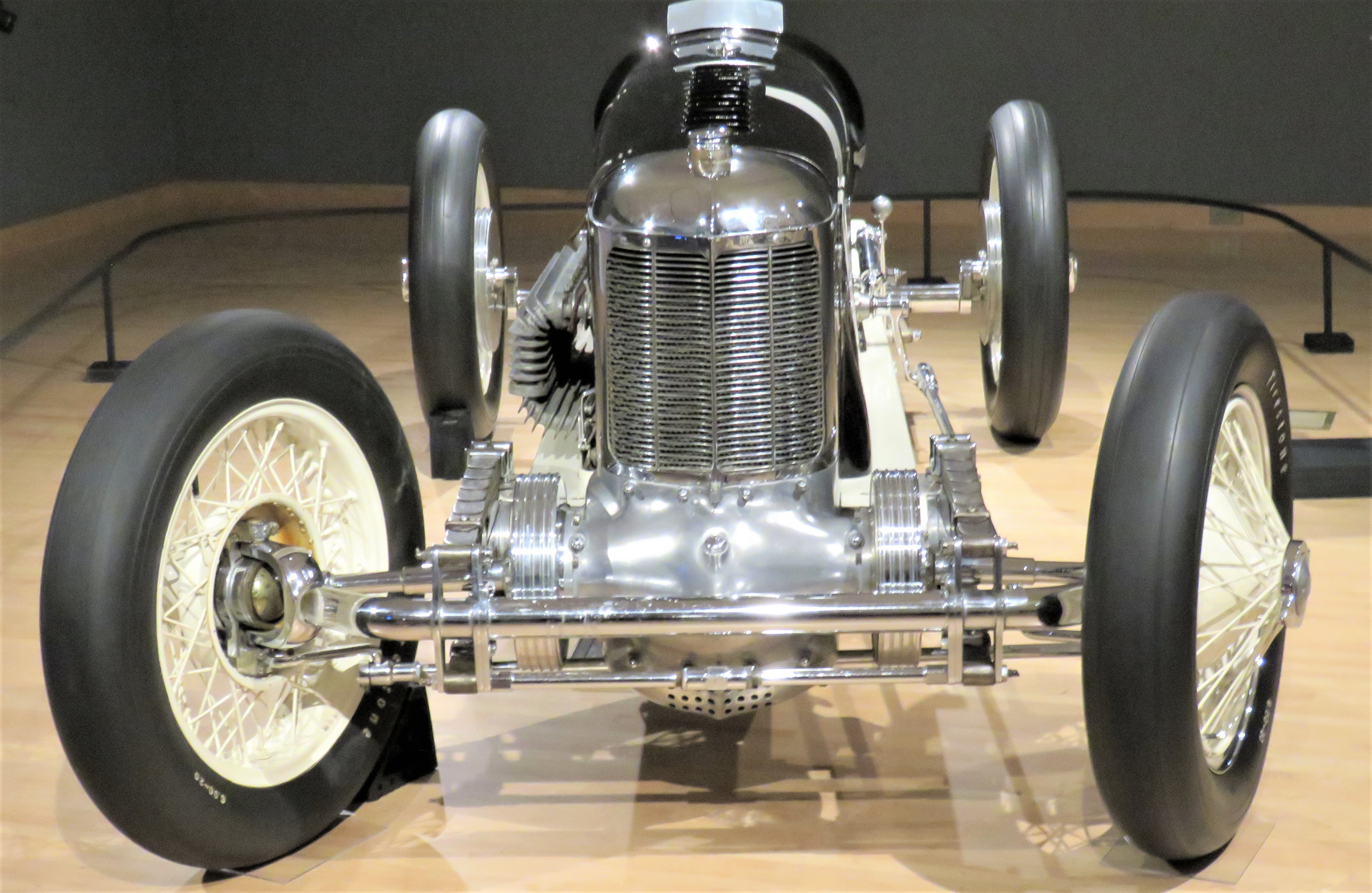
The oldest racer is parked in the art museum’s expansive lobby: a 1911 Franklin in original unrestored condition whose claim to fame was taking part in the Cactus Derby, a treacherous 500-mile sprint from Los Angeles to Phoenix across desolate terrain on the rudimentary roads of the day.
After three attempts, the Franklin finally won the race in 1912. Many of the cars that started the race failed to finish. More than a century later, the Franklin stands at the Phoenix Art Museum as a splendid piece of kinetic sculpture with much well-earned patina.
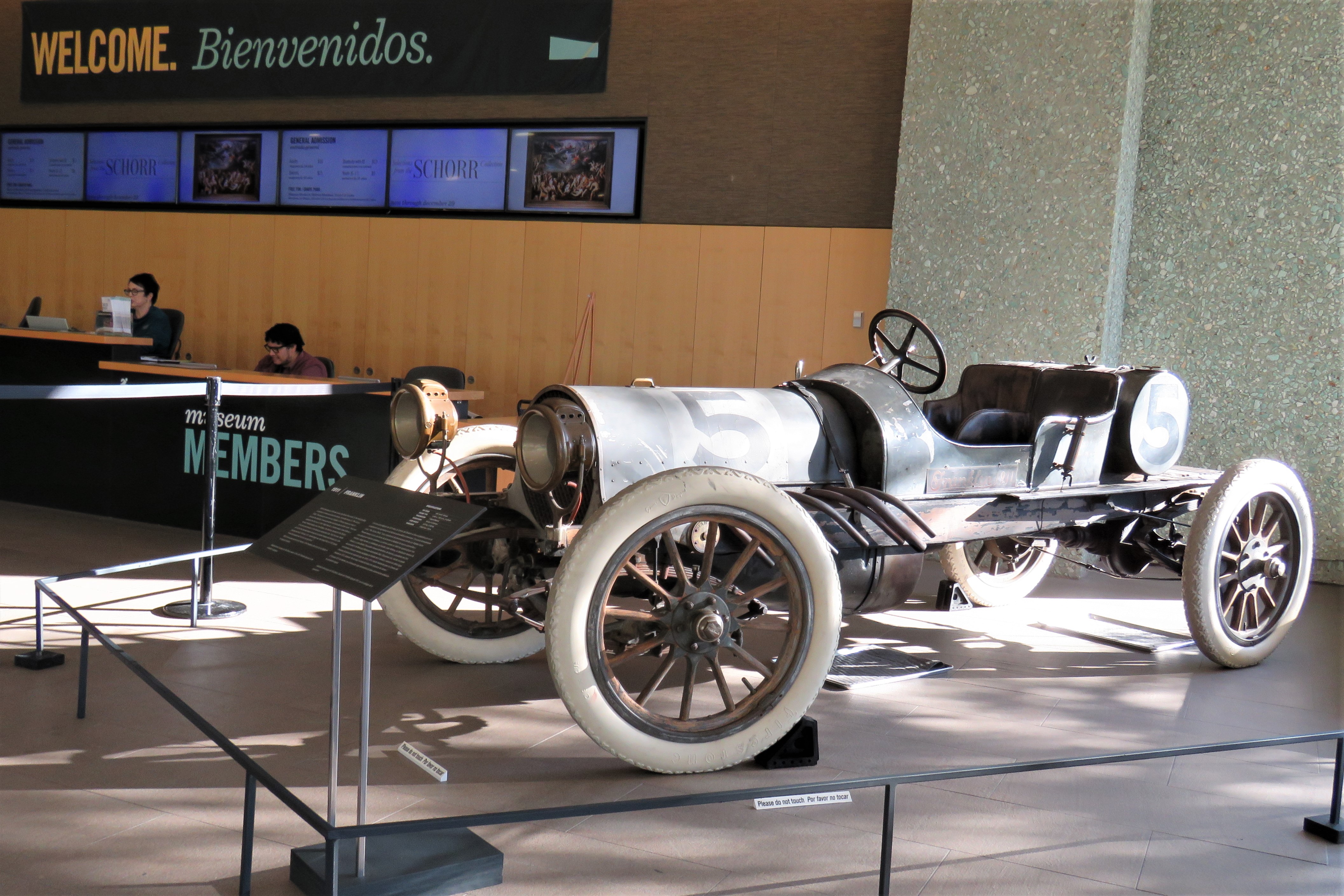
Oh, and one more piece of pioneering history at Legends of Speed: The 1913 Duesenberg, the first race car to wear the Duesenberg brand and driven by one of the most-iconic of early competitors, Eddie Rickenbacker, who finished in 10th place in the car’s first outing at the Indy 500. Rickenbacker later became best-known for his heroic exploits as a World War 1 fighter pilot.
While the Legends of Speed exhibit is a wonder that encompasses various forms of international motorsports, some U.S. race fans might be put off that there is no homage to NHRA drag racers or NASCAR stock cars. Those cars, the organizers said, would have been too large for the exhibit space, as well as perhaps not embodying the artistic goals of the show.
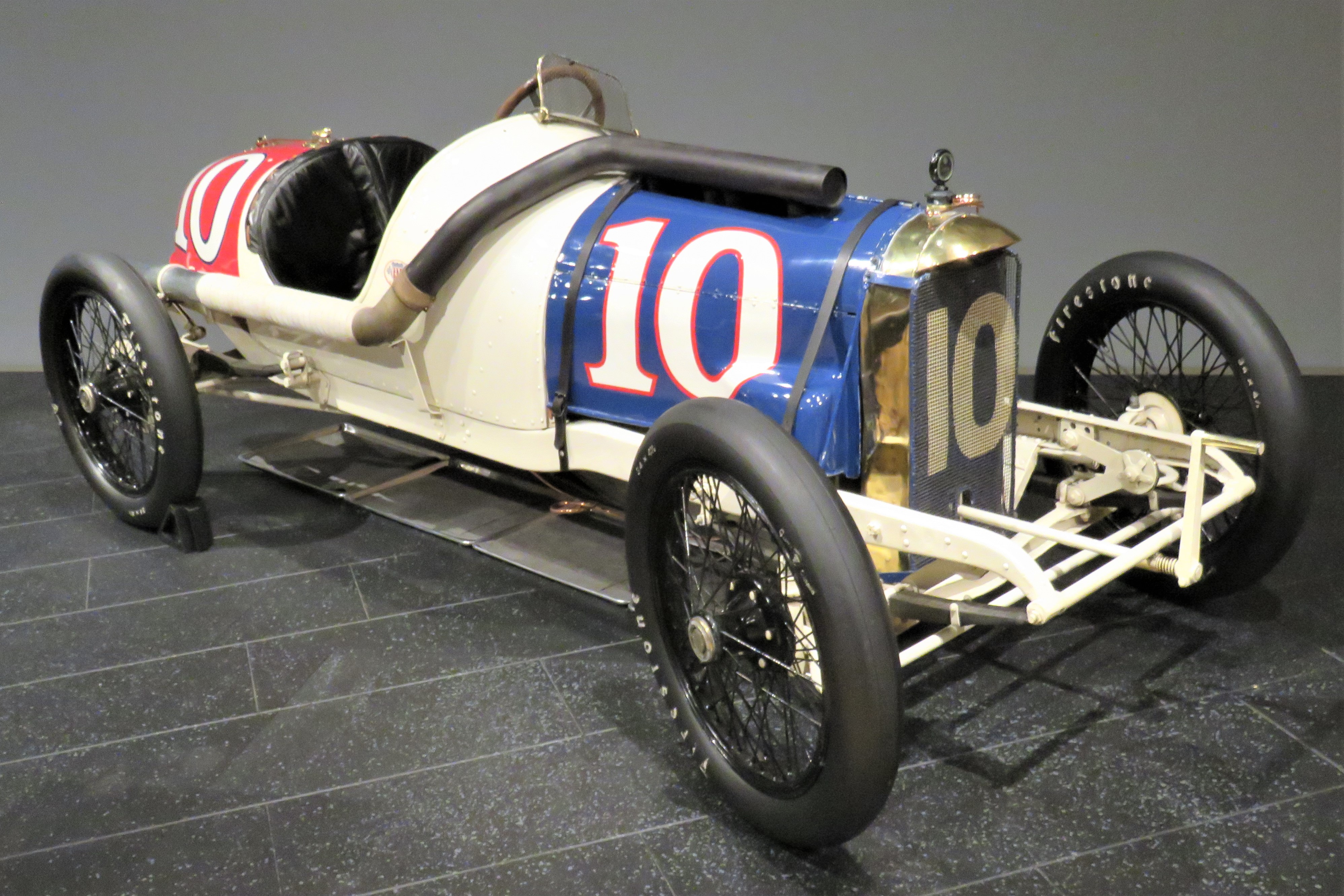
St. James notes she is hopeful that Legends could educate and entice young people into a better appreciation of motorsports, and maybe help kick off racing or automotive careers.
“Young people could kind of get an idea that there was a whole bunch of stuff that went on a long time ago, that will hopefully attract them to maybe work on cars, to learn about cars,” she said. “They have to learn from something different, and this could be it.”
For more information about the Legends of Speed exhibit, and other features and lectures associated with it, visit the Phoenix Art Museum’s website.






This is a brilliant idea! Hopefully more museums will follow and display these brilliant works of art as they rolling sculptures they are.
ART NEVER TO BE REPEATED AGAIN WITH SUCH CAREFUL DETAIL AND CARING HANDS FOR THE INDIVISUALISUM LOVE OF A SINGLE AUTOMOBILE…